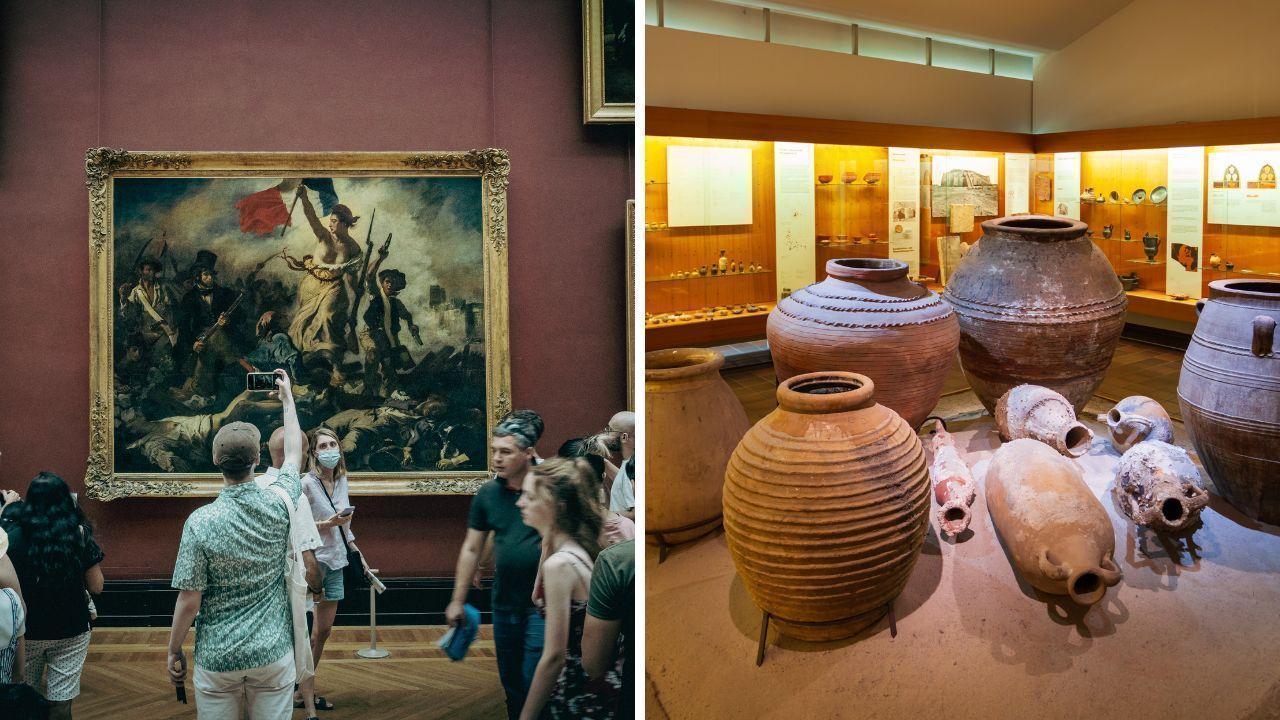
Post by: Vansh Kumar
In a rapidly changing world, where technology often overshadows tradition, living museums stand as vibrant sanctuaries of cultural heritage. These unique spaces breathe life into history by engaging visitors with dynamic reenactments, traditional crafts, and communal gatherings. Unlike conventional museums that display artifacts behind glass, living museums immerse visitors in the sights, sounds, and tastes of bygone eras. This article explores how cultural practices in living museums help preserve history and foster a deeper appreciation of our shared heritage.
At the heart of the living museum experience is the idea of active participation. Visitors are not merely passive observers; they become part of the narrative. Living museums often recreate historical environments, showcasing how communities functioned in the past. Whether it's a pioneer village, a historic farm, or an Indigenous settlement, these spaces offer a tangible connection to history. For example, the Colonial Williamsburg in Virginia allows visitors to walk the streets of a recreated 18th-century town, complete with costumed interpreters who share stories of the people who lived there. Through hands-on activities like cooking, blacksmithing, and crafting, guests gain insight into the daily lives of past generations.
Cultural practices are the lifeblood of living museums. They encompass everything from traditional cooking methods and artisan skills to local storytelling and music. By showcasing these practices, living museums provide a platform for communities to share their history and values. One of the most significant benefits of living museums is their educational value. Visitors learn by doing, which often leaves a more lasting impression than reading about history in a textbook. For instance, at a living history farm, visitors might plant seeds, harvest crops, or churn butter, giving them firsthand experience of agricultural practices from previous generations. This experiential learning approach not only makes history more relatable but also fosters a sense of empathy. Understanding the challenges and triumphs of those who came before us can help us appreciate the complexities of our own lives and societal issues.
One of the most significant benefits of living museums is their educational value. Visitors learn by doing, which often leaves a more lasting impression than reading about history in a textbook. For instance, at a living history farm, visitors might plant seeds, harvest crops, or churn butter, giving them firsthand experience of agricultural practices from previous generations. This experiential learning approach not only makes history more relatable but also fosters a sense of empathy. Understanding the challenges and triumphs of those who came before us can help us appreciate the complexities of our own lives and societal issues.

Living museums often play a crucial role in preserving local cultures and traditions. They act as community hubs where individuals come together to celebrate their heritage. Many living museums involve local residents in their programs, ensuring that cultural practices are passed down through generations. For example, traditional festivals held at living museums can showcase music, dance, and food unique to a region. These events not only entertain but also educate participants about the significance of these cultural practices. By involving the community, living museums help strengthen social ties and instill a sense of pride in one’s heritage.
In today's fast-paced world, there's often a disconnect between generations. Living museums can bridge this gap by creating spaces where younger and older generations can come together. Through storytelling sessions, craft workshops, and interactive exhibits, visitors of all ages can share their experiences and learn from one another. For example, many living museums host intergenerational programs where children learn traditional skills from elders. This not only preserves vital cultural practices but also fosters respect and understanding between generations.
Many living museums emphasize sustainability by showcasing traditional practices that respect the environment. For instance, they may demonstrate how Indigenous communities used local resources sustainably for centuries. This approach not only highlights historical methods but also educates visitors about modern sustainability challenges and solutions. By promoting ethical practices and environmental stewardship, living museums inspire visitors to think critically about their own choices and their impact on the world. This dialogue is essential for fostering a more sustainable future.
Living museums also contribute to local economies. By attracting tourists, they create jobs and stimulate growth in surrounding areas. Visitors often seek out authentic experiences, and living museums offer a unique opportunity to engage with history in a meaningful way. In addition to direct economic benefits, living museums help raise awareness about the importance of cultural preservation. As visitors engage with living history, they are more likely to support efforts to maintain these sites and the cultural practices they embody.
Despite their many benefits, living museums face several challenges. Funding is often limited, and maintaining historical accuracy can be a daunting task. Additionally, as society evolves, living museums must adapt to ensure they remain relevant and engaging. Incorporating modern technologies can help enhance the visitor experience, but it’s crucial to strike a balance. Living museums should maintain their focus on authenticity while embracing new tools to reach a broader audience. This blend of tradition and innovation can keep the essence of cultural practices alive for future generations.
Living museums are special places where people can learn about history and culture by experiencing it firsthand. In living museums, visitors can see how people lived in the past through fun activities like cooking, farming, and making crafts. This hands-on learning helps everyone understand and remember important cultural practices that keep history alive. Living museums also bring people together from different generations, allowing kids and their grandparents to share stories and traditions. By showing how people used to live, living museums help us appreciate our past and learn about the importance of preserving our cultural heritage. They also encourage us to care for the environment, showing how traditional ways of life can be sustainable. Overall, living museums are exciting places that teach us about our history and the cultural practices that shape our world today.
This summary is brought to you by the DXB News Network. The information provided is meant to be engaging and informative for readers of all ages, particularly kids and children. While we strive to present accurate and valuable content, please remember that the information reflects our understanding and is not a substitute for professional advice. Always explore and learn more about the topics that interest you
Living museums, cultural practices, historical reenactments, heritage preservation, community engagement, experiential learning, traditional crafts, educational value, intergenerational programs, sustainability, cultural heritage, authentic experiences, historical accuracy, artisan skills, environmental stewardship, local traditions, hands-on activities, cultural festivals, economic benefits, cultural appreciation
#trending #latest #LivingMuseums, #CulturalPractices, #HeritagePreservation, #HistoricalReenactments, #CommunityEngagement, #ExperientialLearning, #TraditionalCrafts, #EducationalValue, #IntergenerationalPrograms, #Sustainability, #CulturalHeritage, #AuthenticExperiences, #ArtisanSkills, #EnvironmentalStewardship, #LocalTraditions, #HandsOnActivities, #CulturalFestivals, #EconomicBenefits, #CulturalAppreciation #breakingnews #worldnews #headlines #topstories #globalUpdate #dxbnewsnetwork #dxbnews #dxbdnn #dxbnewsnetworkdnn #bestnewschanneldubai #bestnewschannelUAE #bestnewschannelabudhabi #bestnewschannelajman #bestnewschannelofdubai #popularnewschanneldubai

Sheikh Sultan bin Mohammed Al Qasimi condoles with Sheikh Saud bin Rashid Al Mualla on the death of his mother, Sheikha Hessa bint Hamid Al Shamsi....Read More.

Nigerian boxer Gabriel Oluwasegun Olanrewaju dies after collapsing in the ring during a fight in Ghana. He was 40. Tragic loss for the boxing community....Read More.














Ananya Panday Shines at IPL 2025 with Stunning Dance Performance
Bollywood star Ananya Panday dazzled the crowd at Wankhede Stadium with her energetic dance before M

Foreign Minister Joins Heritage Foundation Discussion in Washington
Dr. Abdullatif Al Zayani attended a session at the Heritage Foundation in Washington, discussing Bah

ChatGPT Hits 1 Million Users in an Hour with Ghibli AI Art
OpenAI's new image feature, creating Ghibli-style AI art, goes viral. ChatGPT added 1 million users

UConn Joins Top Seeds in Women’s Final Four
UConn, South Carolina, UCLA, and Texas are in the Women’s Final Four. It’s set to be an exciting sho

7 Free Ghibli-Style AI Image Editors to Try Now
Transform your images into Ghibli-style art with these 7 free AI tools. From dreamy landscapes to an